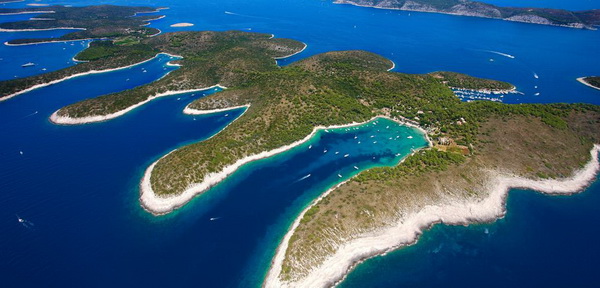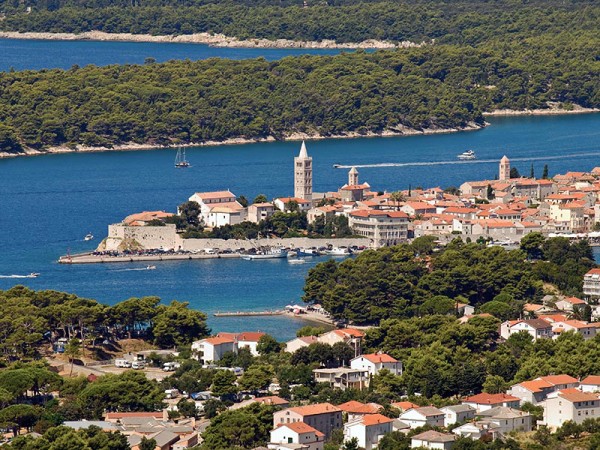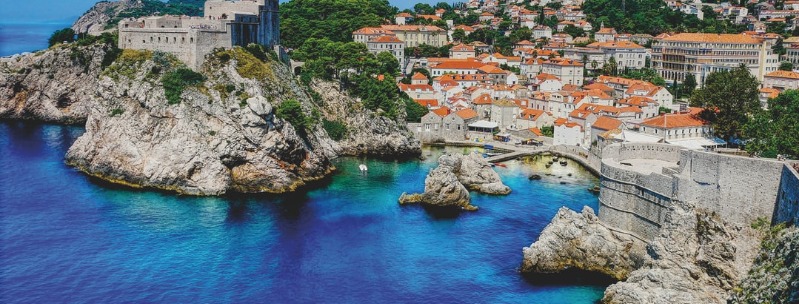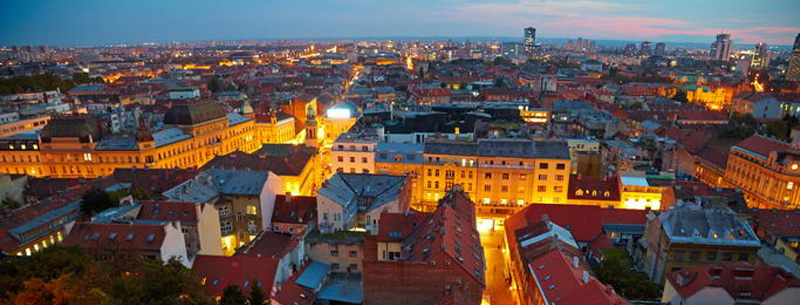Croatia (Hrvatska) has come a long way since the summer of 1991 when foreign tourists fled from a region standing on the verge of war. Now that stability has returned, visitors are steadily coming back to a country that boasts one of the most outstanding stretches of coastline that Europe has to offer. This return to normality has been keenly awaited by Croats, but patriotism – and a sense of the nation’s place in history – remains a serious business here. Croatia was an independent kingdom in the tenth century, fell under the rule of Hungary in the eleventh, and was subsequently absorbed by the Austro-Hungarian Empire before becoming part of the new state of Yugoslavia in 1918.
Croatian aspirations were frustrated by a Yugoslav state which was initially dominated by Serbs, and then (after 1945) ruled by Communists. Croatia’s declaration of independence on June 25, 1991, was fiercely contested by a Serb-dominated Yugoslav army eager to preserve their control over portions of Croatia in which groups of ethnic Serbs lived. The period of war – and the fragile, UN-supervised ceasefire that followed – was finally brought to a close by Croatian offensives during the summer of 1995. Croatia’s capital, Zagreb, is a typical central-European metropolis, combining elegant nineteenth-century architecture with plenty of cultural diversions and vibrant café life. At the northern end of the Adriatic coast, the peninsula of Istria contains many of the country’s most developed resorts, with old Venetian towns like Porec and Rovinj rubbing shoulders with the raffish port of Pula. Further south lies Dalmatia, a dramatic, mountain-fringed stretch of coastline studded with islands. Dalmatia’s main town is Split, an ancient Roman settlement and modern port that provides a jumping-off point to the most enchanting of Croatia’s islands, Brac, Hvar, Vis and Korcula, where you’ll find lively fishing villages and the best of the beaches. South of Split lies the walled medieval city of Dubrovnik, the site of an important festival in the summer and a magical place to be whatever the season.
Rocky cliffs, verdant mountains, sprawling seaside resorts, sleek yachts, quiet fishing villages, and extravagant spa services. Croatia is a prime destination for yacht charters, ultimate experiences, and luxury spa resorts; simply put, Croatia inspires guests and locals alike to live the good life.
With one of the most gorgeous coastlines in Europe, Croatia is full of yacht charter and sailing vacation opportunities. Croatia’s 1,185 islands, picturesque coves, and stunning reefs are an incredible backdrop to a dream beach vacation.
Despite the pristine seascape, Croatia has remained largely undeveloped, providing the perfect destination for private villas on secluded beaches and exclusive luxury resorts along the Adriatic. Select from a never-ending collection of crewed sail charters or bareboat yacht charters and cruise along with the ribbons of white sand fringed by mountains and guarded by islets and islands. Indeed, Croatia is a sun-kissed country with lavish spa resorts and supreme sailing conditions.
Croatia local information
- Flag:

- Time Zone: UTC +1
- Language: Croatian
- Currency: kuna (HRK)
Zagreb
Capital of an independent state since 1991, ZAGREB has served as the cultural and political focus of the nation since the Middle Ages. The city grew out of two medieval communities, Kaptol, to the east, and Gradec, to the west, each sited on a hill and divided by a river long since dried up but nowadays marked by a street known as Tkalciceva. Kaptol (meaning “Cathedral Chapter”) was a religious center and the seat of an archbishop; Gradec was ruled by a group of Croatian nobles. The two communities became bitter rivals, and remained so until the sixteenth century when the threat of Turkish invasion caused them to unite against the common enemy; they took the name Zagreb, which means, literally, “behind the hill”. Zagreb grew rapidly in the nineteenth century, and the majority of its buildings are relatively well-preserved, grand, peach-colored monuments to the self-esteem of the Austro-Hungarian Empire. Nowadays, with a population topping one million, Zagreb is the boisterous capital of a newly self-confident nation. A handful of good museums and a vibrant nightlife ensure that a few days here will be well spent.
Wonderful Croatian Islands
When visiting Croatia, you will find an amazing array of wonderful islands. Each island has its own beauty and an array of lovely attractions. Over a thousand islands are located in Croatia, and every island varies in size. There are small islands and there are big islands, for example, Cres Island, the 20th largest island in the Mediterranean. So, among the beautiful attractions in Croatia, you must also visit its islands, because they feature a unique natural beauty. Here is an overview of some of the most popular islands in Croatia:
Hvar
When visiting Hvar, you will find amazing beaches, gently rolling hills, vibrant nightlife, and of course, lush vineyards. While you are wandering around on the island’s medieval streets, you will notice that this place has an amazing ancient history. Starigrad is the oldest village in Hvar, but Hvar Town is the main attraction on this island. If you are looking for some interesting activities, you can take a water taxi to the Pakleni archipelago or explore the southern cliffs.

Korcula
Korcula is the most populated island in Croatia. This island is separated from the natural ground by a narrow strait. Korcula is also the name of the capital island. Known as “Little Dubrovnik”, Korcula is a beautiful ancient city and it’s famous for its unique architecture. One of the main attractions on this island is the alleged house of birth of Marco Polo. Still, the most impressive building on this island is the Cathedral of St. Marco, featuring a Gothic-Renaissance style. Its construction was completed in the 15th century.

Rab
Rab is positioned on the northern coast of Croatia. This island is one of the most densely wooded islands in the country. Here, you can find a large display of botanical life, including several trees, plants, and a 100-year-old agave. Rab is considered one of the greenest islands in the Adriatic Sea. Rab Island is an excellent place to visit any time because it has mild winters and warm summers.


